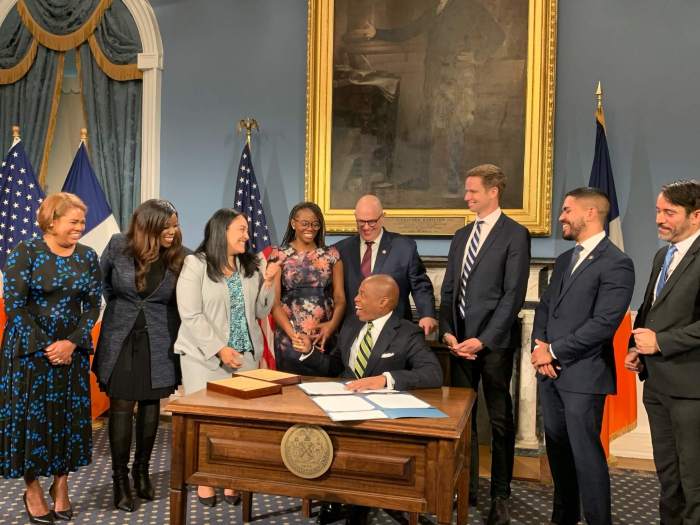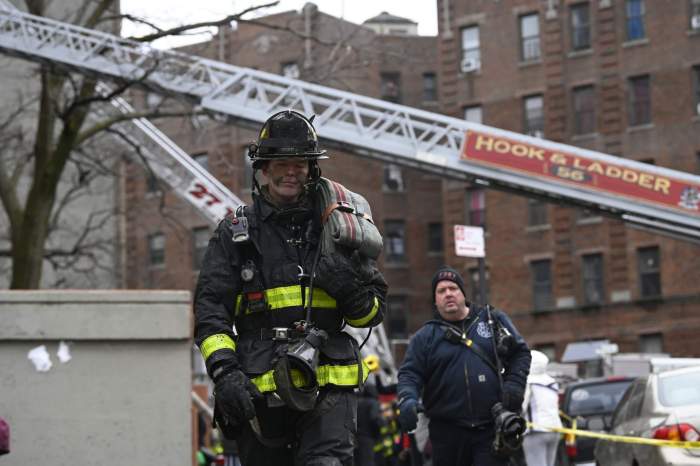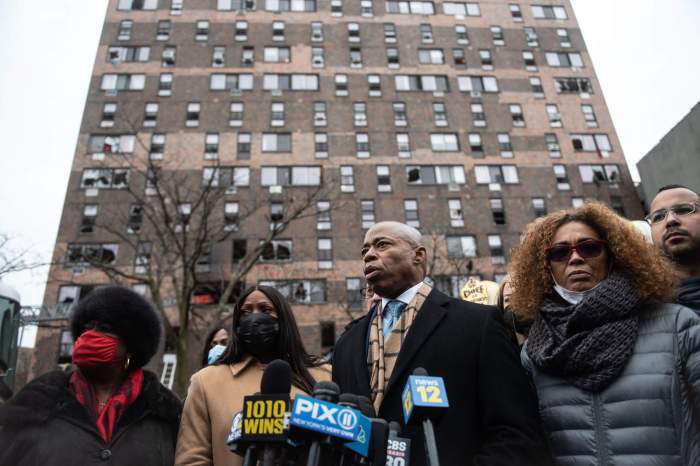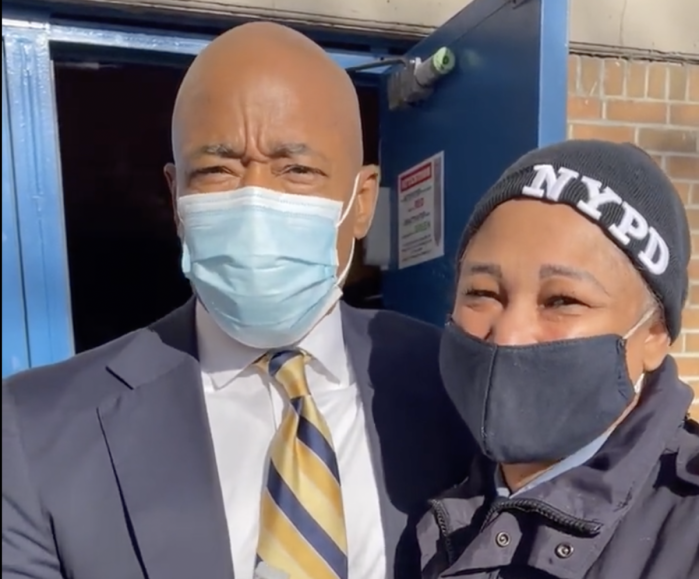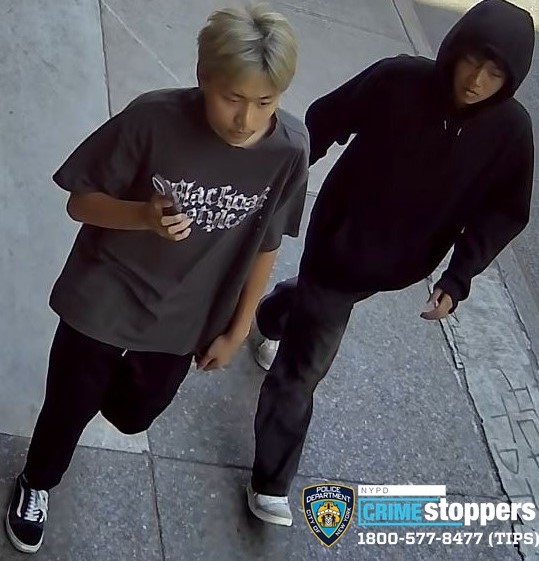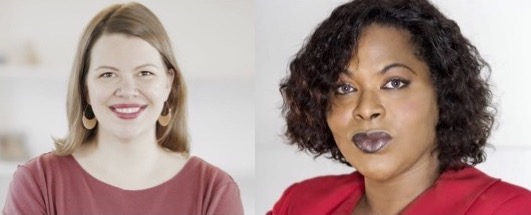After 19 students and two teachers were killed at Robb Elementary school in Uvalde, Texas, on May 24, NYC leaders and school district representatives have begun mulling over a common response to these events: beefing up police presence in schools.
New York City currently spends more than $400 million on a school policing budget geared toward 4,000 existing school police, making NYC’s spending amount for school police larger than any other city in the country. But in the wake of the tragedy in Uvalde, Mayor Eric Adams and Schools Chancellor David Banks have called for more police in schools and new scanners.
The addition of more police officers in NYC schools is a notable concern for students and parents of color, however, who note that inviting law enforcement into school buildings as a response to a shooting isn’t comforting, it’s concerning.
A senior in high school, Keneisha Buckley, a youth leader at the Urban Youth Collaborative, said she’d been fighting for police-free schools since she was in eighth grade. The concept of police-free schools is a movement that has been fully led by students of color, students with disabilities, immigrants and LGBTQIA+ youth who hope to dismantle the school-to-prison pipeline by ending the systemic policing of their schools and communities.
“Last year, a close family member became a victim of gun violence. Never have I felt that, if even more police were in my community he would still be here,” Buckley said. “Instead, I’ve feared more police being put in my community instead of the resources we need. Similarly, after the shooting in Texas, it was proven that police don’t prevent violence. Yet, now I have to fear more police being put in my school instead of the resources we need.”
In a New York Civil Liberties Union (NYCLU) survey conducted of students of color, the majority of them said they want police removed from schools — with 60% saying they have experience or know someone who has experienced at least one negative interaction with school police. For Black students, this percentage was up to 78%.
The Bronx Times reached out to the Mayor’ Adams office for comment, and is awaiting a response.
Jenna Lyle, a Department of Education spokesperson told the Bronx Times that every school in DOE system is staffed by NYPD School Safety Agents, who have a direct line to the local precinct.
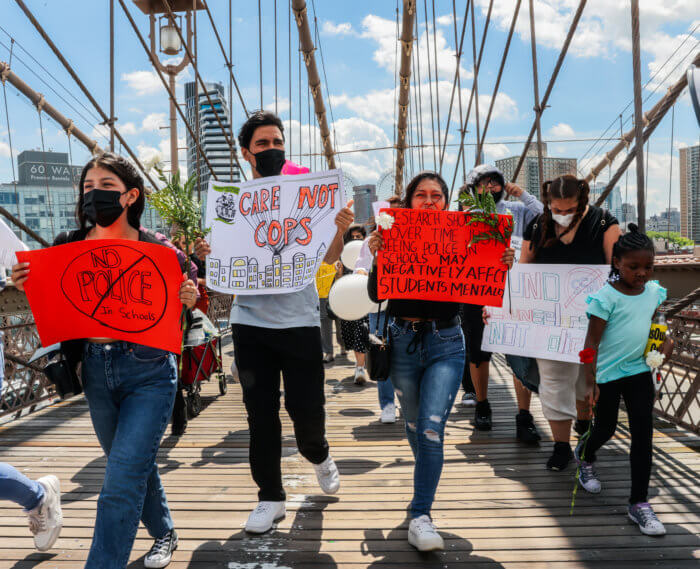
New York City’s police-free school movement has employed a “6 D’s” approach: decriminalize school policies; deprioritize police officers as use of school enforcement; divest funding for school policing into student support systems; demilitarize weapons from school police officers; dismantle school police departments and delegitimize narratives that policing is needed in communities.
With the city’s annual budget set to be finalized in the next few weeks, advocates are calling on the elimination of the NYPD’s School Policing Division and funding for new or existing student scanning and surveillance equipment. As for what they want funded, advocates are calling for $75 million set aside for restorative justice coordinators, social workers and new counselors, as well as $45 million in restorative justice training.
Across the nation, states are looking to increase police presence in schools, carrying significant budgets to do so. Virginia plans to spend more than $27 million to fund police positions in schools, while Kentucky passed a bill last week that requires all the schools in the state to employ school resource officers.
Researchers have found that campus policing does not reduce gun violence. A 2021 JAMA Network study of 133 school shootings actually found a higher mortality rate in schools with school police.
Also, a 2021 RAND study found that school resource officers appear to protect students from “a non-trivial number of physical attacks and fights within schools,” which could have long-term academic and psychological benefits for students. But schools with resource officers also report more suspensions, expulsions, police referrals and student arrests — and those harsher disciplinary punishments disproportionately fall on Black students, male students and students with disabilities.
And data suggests school policing is inextricably linked to systemic oppression and criminalization of Black and brown people, and represents a belief that people of color need to be controlled and intimidated, advocates say.
In NYC, school policing disproportionately harms students of color, with Black and Latino students making up 90% of school police incidents, data from NYCLU states. Students of color make up 66% of the student population in NYC schools.
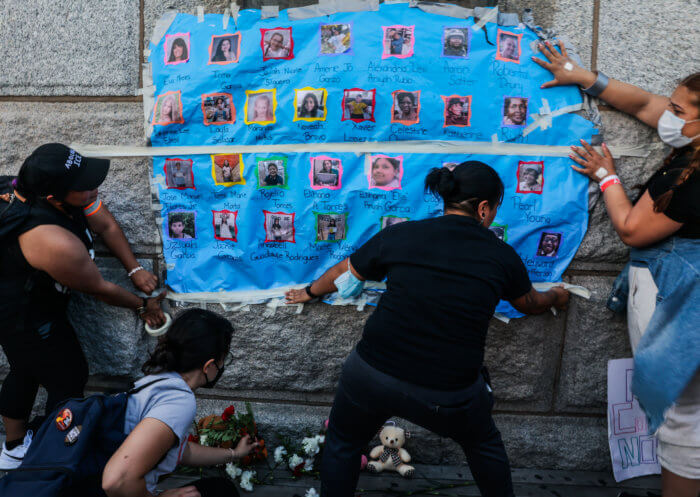
“Going to school with the police does not make me feel safe. While our lawmakers continue to praise the efforts of policing, increase their budget, increase their presence, our students are suffering and struggling with our mental health,” said Vivian, a leader with the NYCLU Teen Activist Project. “NYC funds more school police positions than counselors, social workers or restorative justice coordinators — and the mayor’s executive budget continues this detrimental pattern. We demand more funding for mental health and restorative justice coordinators. We demand the removal of police from schools.”
It’s not just students who decry NYPD presence in their schools, but also city leaders who believe NYC schools should be free of police presence and divest funds toward schools counselors and support staff.
“[Fourteen] million students across the country attend schools with a police presence but no counselors, social workers, or nurses,” said NYC Comptroller Brad Lander. “Black students are more likely to attend a school with more police on site than mental health staff, while studies indicate that police in schools negatively impact students’ mental health. Schools should be safe places of equitable learning and nurturing — and we must fund staffing that fosters the social and mental wellbeing of our children.”
Reach Robbie Sequeira at rsequeira@schnepsmedia.com or (718) 260-4599. For more coverage, follow us on Twitter, Facebook and Instagram @bronxtimes

















